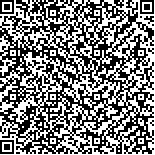马将,刘煜,李红,等.基于等速技术的感觉运动训练对脑卒中患者手功能影响的临床研究[J].中华物理医学与康复杂志,2025,47(6):499-505
扫码阅读全文

|
| 基于等速技术的感觉运动训练对脑卒中患者手功能影响的临床研究 |
|
| |
| DOI:10.3760/cma.j.cn421666-20240118-00062 |
| 中文关键词: 脑卒中 等速技术 等速肌力训练 感觉功能 运动功能 |
| 英文关键词: Stroke Isokinetic techniques Isokinetic strength training Sensory function Motor function Hand rehabilitation |
| 基金项目:河北省卫健委重点科技研究计划(20230222) |
|
| 摘要点击次数: 1629 |
| 全文下载次数: 1451 |
| 中文摘要: |
| 目的 观察基于等速技术的感觉运动训练对脑卒中患者上肢和手功能的影响。 方法 按随机数字表法将符合纳入和排除标准的脑卒中患者42例随机分为等速组22例和对照组20例。2组患者均接受常规药物和康复治疗,对照组同时辅以感觉运动训练,等速组则辅以基于等速技术的感觉运动训练。基于等速技术的感觉运动训练每日1次,每次45 min,每周治疗5 d,连续治疗4周。于治疗前和治疗4周后(治疗后)采用单丝触觉(SWME)、两点辨别觉(2-PD)、腕关节本体感觉分别评估2组患者的上肢和手的触觉、复合感觉、本体感觉功能;同时采用Fugl-Meyer上肢运动功能(FMA-UE)和简易上肢功能评价(STEF)评定2组患者上肢和手的运动功能。 结果 治疗后,2组患者示指的SWME评分和2-PD距离、大鱼际的SWME评分和2-PD距离、运动觉(屈曲30°)的角度、FMA-UE评分、STEF评分较组内治疗前均显著改善,差异均有统计学意义(P<0.05),且等速组运动觉(伸展30°)的角度较组内治疗前亦显著降低(P<0.05)。治疗后,等速组示指的SWME评分[5.50(5.00,6.00)分]、大鱼际的SWME评分[6.00(5.00,6.00)分]、FMA-UE评分[58.00(53.50,63.00)分]和STEF评分[75.00(56.75,80.00)分]均显著高于对照组治疗后(P<0.05),且运动觉(屈曲30°)的角度亦显著优于对照组治疗后(P<0.05)。 结论 基于等速技术的感觉运动训练可显著改善脑卒中恢复期(Brunnstrom Ⅳ期以上)患者的触觉和运动觉,提高其粗大运动和精细动作能力。 |
| 英文摘要: |
| Objective To observe the effect of isokinetic sensorimotor training on the hand function of stroke survivors. Methods Forty-two stroke survivors with hand dysfunction were randomly divided into an isokinetic group of 22 and a control group of 20. Both groups were given sensorimotor training in addition to routine drug treatment and rehabilitation therapy, but the isokinetic group was additionally provided with sensorimotor training based on isokinetic techniques for 45 minutes daily, 5 days a week for 4 consecutive weeks. Before and after the intervention, both groups were evaluated using the Semmes-Weinstein monofilament examination (SWME), their two-point discrimination (2-PD) was documented, proprioception of their wrist joints was quantified, and the Fugl-Meyer upper extremity assessment (FMA-UE) and the simplified upper limb function assessment (STEF) were applied. Results In both groups after treatment, there was a significant improvement in the SWME scores and 2-PD distance of the index finger and the thenar, and there was a significant decrease in the angle of motion perception (at 30° of flexion). The average FMA-UE and STEF scores of both groups had improved. After the treatment, the SWME scores of the index finger and the thenar, as well as well as the average FMA-UE and STEF scores of the isokinetic group were significantly higher than the control group′s averages. Angle of motion perception was also significantly superior. Conclusions Sensorimotor training based on isokinetic techniques can significantly improve touch, motion sense, gross motor function and the fine motor ability of stroke survivors. |
|
查看全文
查看/发表评论 下载PDF阅读器 |
| 关闭 |
|
|
|